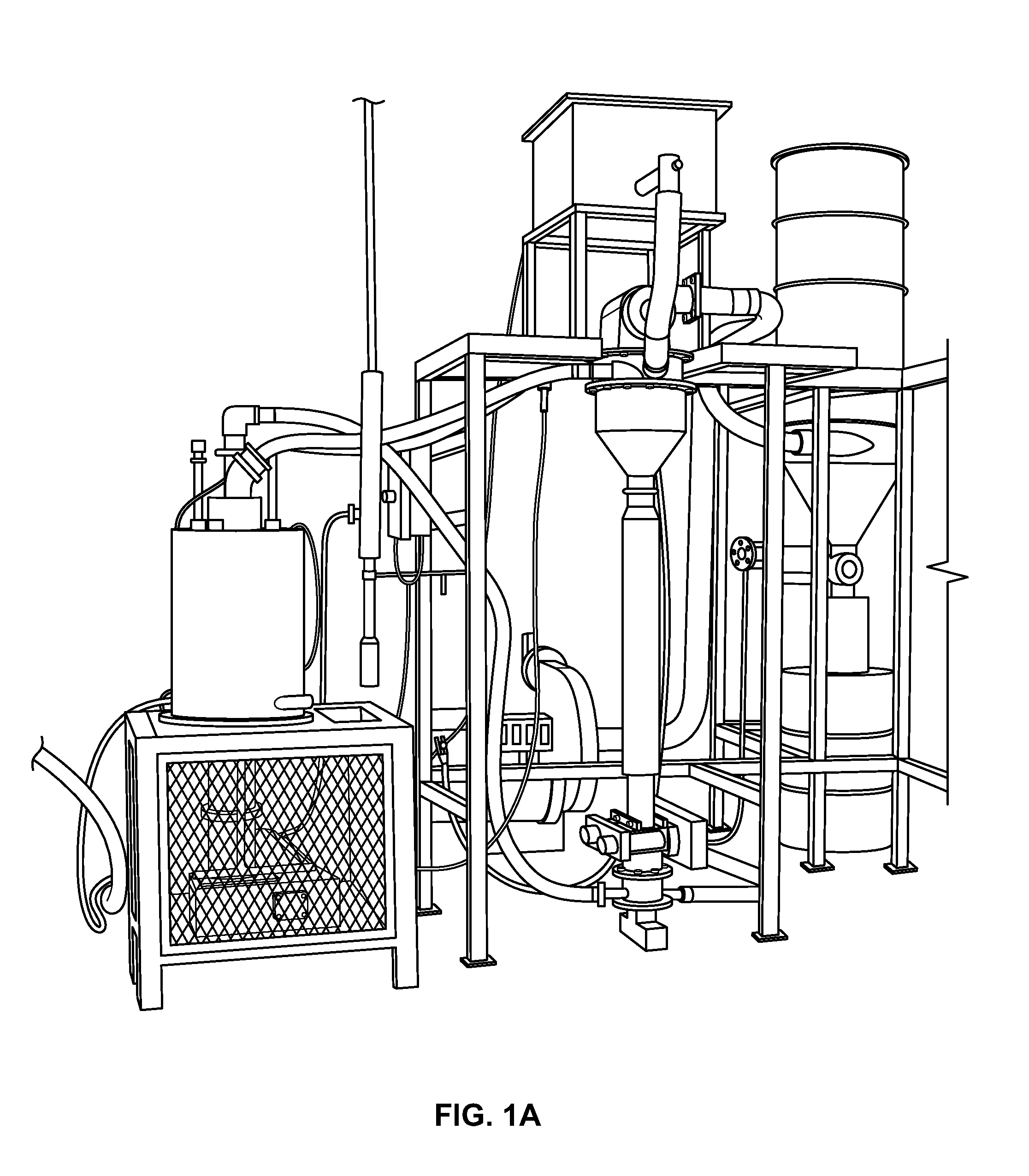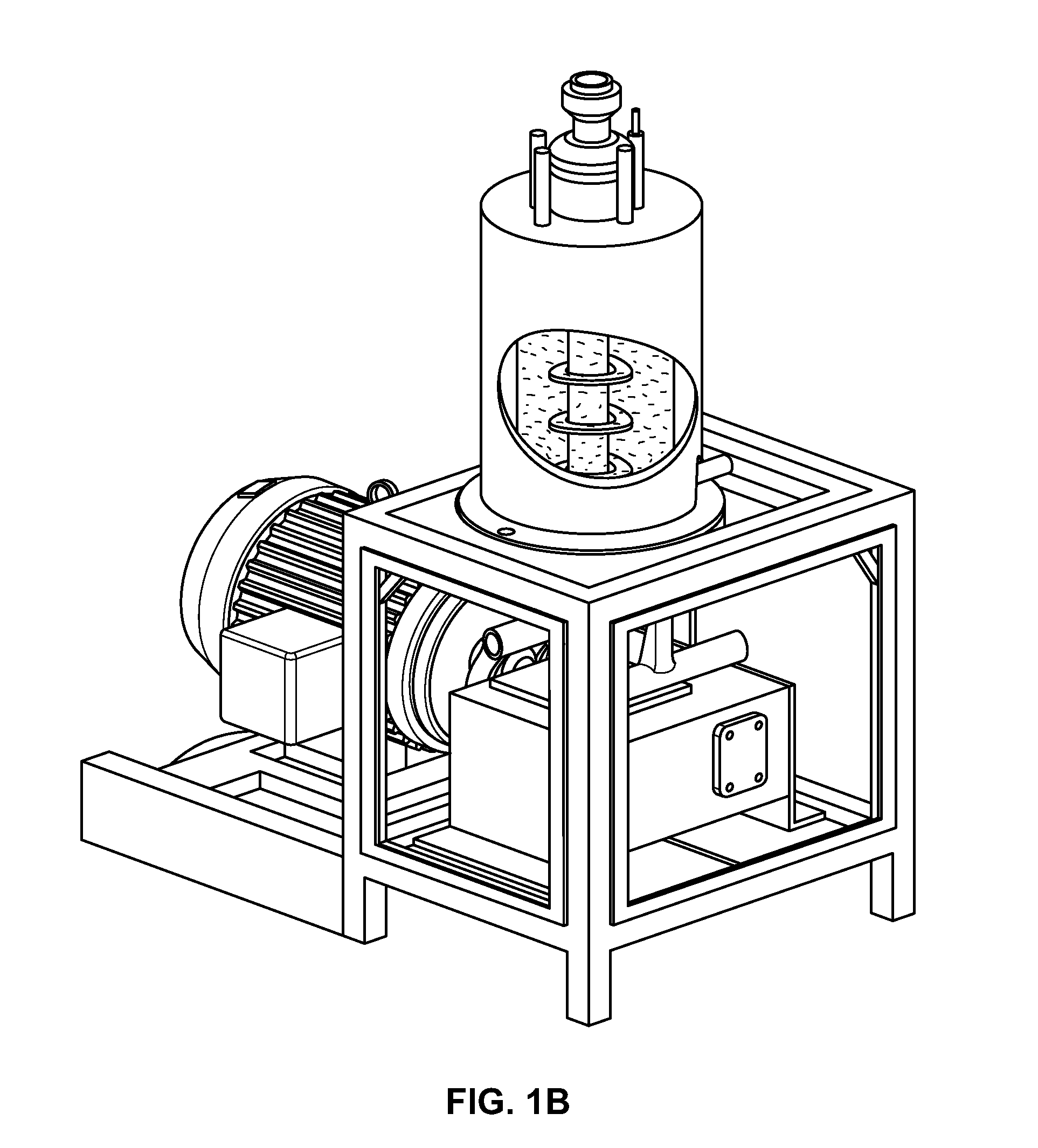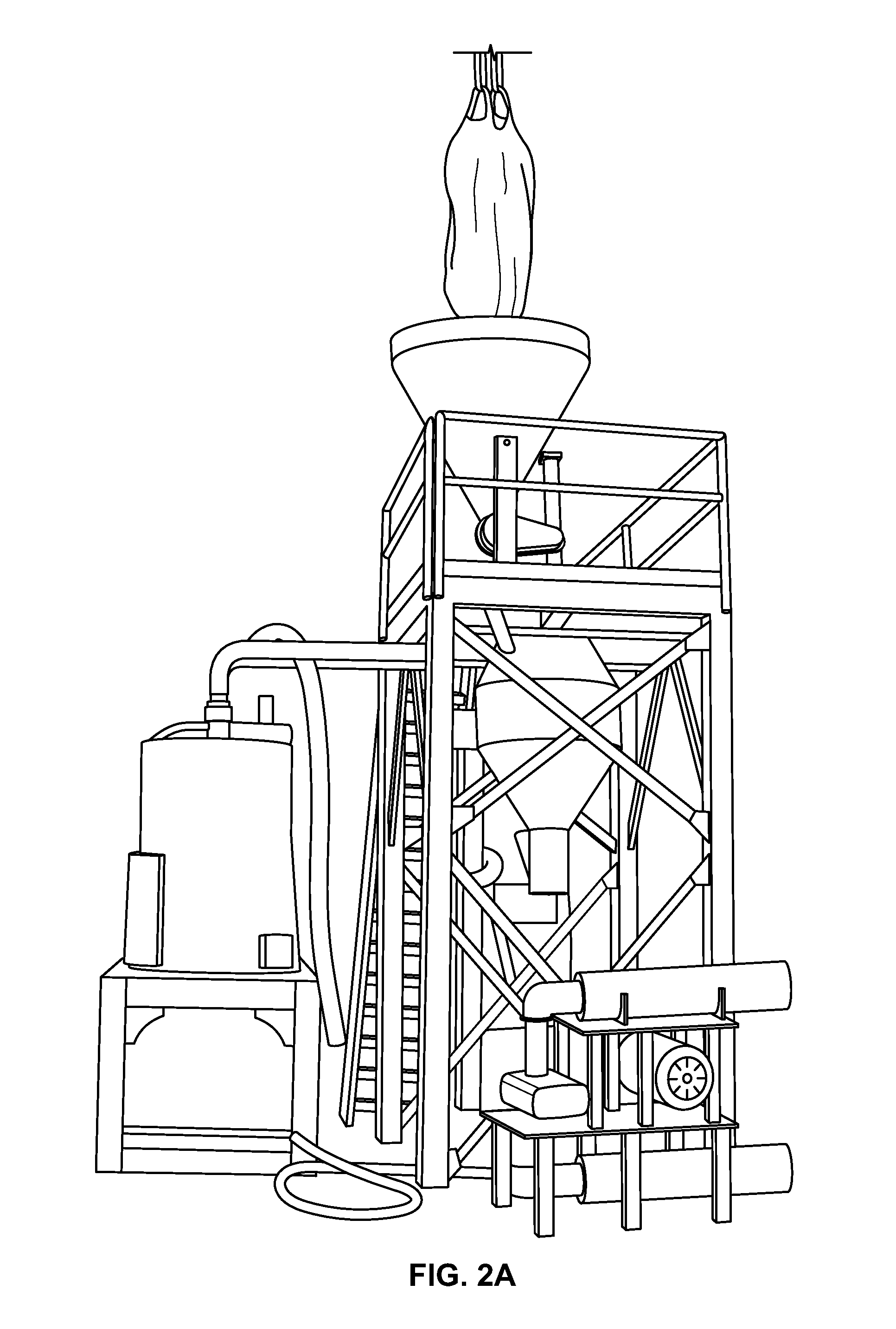Method and compositions for pozzolanic binders derived from non-ferrous smelter slags
a technology of non-ferrous smelter slag and pozzolanic binders, which is applied in the direction of climate sustainability, solid waste management, sustainable waste treatment, etc., can solve the problems of significant cost, waste product disposal, and single mine can consume more than 100,000 tons per year of cementitious binders for backfilling operations, etc., and achieve the effect of increasing the exposed surface area
- Summary
- Abstract
- Description
- Claims
- Application Information
AI Technical Summary
Benefits of technology
Problems solved by technology
Method used
Image
Examples
example 1
Grinding Using Air-Cooled System
[0047]The commonly encountered form of NFS is in large lumps (>50 cm), as it is handled and produced on site. In the first step of the method, this NFS was crushed into a sand prior fine grinding the sand-like NFS. Subsequently, the sand-like NFS was ground using a stirred media mill in circuit with a high efficiency air classifier system into a fine powder. Typical examples of the size and energy consumption for the fine-powder obtained using an air-cooled NFS were: 12 μm d50=69 kW·h / ton; 8 μm d50=129 kW·h / ton; and 3 μm d50=240 kW·h / ton. The chemical and mineralogical composition of the fine powders prepared using this system is illustrated in FIG. 3. The element oxide composition of the surface of bulk raw NFS sample was SiO2 37.4% (by weight of the glass); Al2O3 3.2%; Fe2O3 57.9%; MgO 1.36%; CaO 1.27%; Na2O 0.53%; K2O 0.69%; carbon 0.03%; sulfur 1.01%; and LOI −4.07%. The physical properties of the powders prepared using this system are illustrated...
example 2
Mortar Strength Using the NFS of Example 1
[0048]Using the ultrafine NFS powders of Example 1, binders were prepared with a range of Portland cement-to-NFS ratios as required under ASTM C618. These binders were tested in mortars by a standardized testing protocol specified for pozzolanic materials (ASTM C618), using 20% Portland cement replacement by the NFS in silica sand mortars. FIGS. 5A and 5B illustrate the relationship between the compressive strength and pozzolanic activity index for these mortars. After 7 and 28 days curing, the mortars made using 20% replacement with the NFS of the invention had strengths of approximately 75% of the control (no replacement with NFS). The pozzolanic activity index (as a percent of the control) for NFS-12 was 71% after 7 days and 86% after 28 days; for NFS-6 it was 78% after 7 days and 91% after 28 days; and for NFS-3 it was 82% after 7 days and 101 after 28 days.
[0049]It was found that pozzolanic reactivity increased with NFS grain fineness. ...
example 3
Grinding Using Granulation
[0050]The purpose of granulation was twofold: first, to increase the proportion of the reactive glassy silicate phase; and second, to create sand-sized particles that were ideal as feed material for the fine grinding mill. This strategy significantly simplified and reduced the energy consumption of pre-processing the slag prior to fine grinding.
[0051]The concept was tested in the lab. First, the as-received NFS was melted in a laboratory furnace at 1450° C. Subsequently, the molten slag was rapidly quenched in a large volume of water to produce a granulate with sand-sized particles. FIG. 6 illustrates the optical microscope images of this material. The mineralogy of the NFS granulate confirmed that the glass content has been significantly increased as shown in FIG. 7 and Table 1 below. The granulated NFS was ground in a lab ball mill to nominal 3 μm, 6 μm, and 12 μm median (d50) products as illustrated in FIG. 8. NFSG-12 had a d95% of 37.4 μm and a Blaine r...
PUM
| Property | Measurement | Unit |
|---|---|---|
| particle size | aaaaa | aaaaa |
| median particle size | aaaaa | aaaaa |
| particle size | aaaaa | aaaaa |
Abstract
Description
Claims
Application Information
 Login to View More
Login to View More - R&D
- Intellectual Property
- Life Sciences
- Materials
- Tech Scout
- Unparalleled Data Quality
- Higher Quality Content
- 60% Fewer Hallucinations
Browse by: Latest US Patents, China's latest patents, Technical Efficacy Thesaurus, Application Domain, Technology Topic, Popular Technical Reports.
© 2025 PatSnap. All rights reserved.Legal|Privacy policy|Modern Slavery Act Transparency Statement|Sitemap|About US| Contact US: help@patsnap.com



